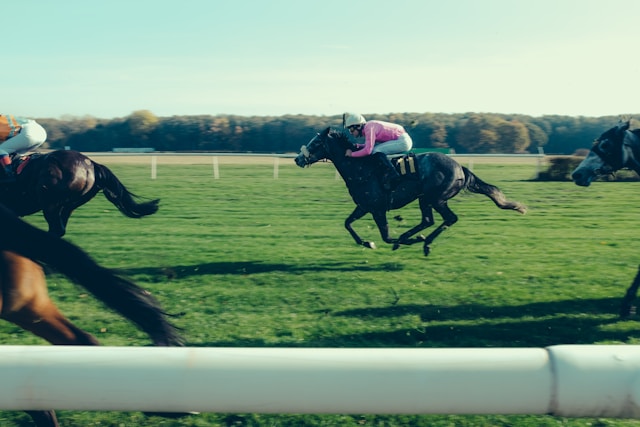A day at the races is unlike any other — the thunder of hooves, the vibrant colors of jockey silks, and the palpable excitement in the air. Yet for newcomers, one aspect often looms as a confusing labyrinth: the odds in horse racing. What do these numbers signify, and how can you use them to gauge your potential gains? Worry not, for we shall dive into the enthralling world of horse racing odds, exploring how to calculate payouts and probabilities with finesse.
A Primer on Odds Formats
Before diving into calculations, it’s crucial to understand that horse racing odds come in various formats—Fractional, Decimal, and Moneyline. The UK primarily uses Fractional odds (e.g., 5/1, pronounced “five-to-one”), which tell you how much profit you’ll make per unit stake, not including the return of your original stake.
Fractional Odds
For instance, odds of 5/1 indicate that for every £1 you stake, you could earn £5 in profit. So, if you bet £10, you’d potentially gain £50, plus get your £10 stake returned, totaling £60.
Decimal Odds
Often used online, decimal odds include the return of your stake in the total payout. For example, Fractional odds of 5/1 translate to Decimal odds of 6.00. If you wager £10 at 6.00, you’d receive £60, your £50 profit plus the £10 stake.
Delving Into Probabilities
Odds don’t just hint at potential payouts; they also reveal a horse’s perceived probability of winning. Calculating this is remarkably straightforward. For Fractional odds (a/b):
Probability = b/a+b ×100
For 5/1 odds, the calculation would be:
Probability = 1/ 5+1 ×100
= 1/6 ×100
= 16.67
Probability = 16.67
The horse has a 16.67% perceived chance of emerging victorious. Do note, however, that this is a simplification. The bookmaker’s margin and public sentiment can skew these numbers.
Calculating Your Windfall
You might be curious about your potential returns once you’re familiar with odds and probabilities. Here’s how you can compute it:
Fractional Odds:
Profit = Stake * (Fractional Odds)
Total Return = Profit + Original Stake
For example, if you place £10 on a horse with 5/1 odds:
Profit = £10 * (5/1) = £50
Total Return = £50 + £10 = £60
Decimal Odds:
Total Return = Stake * Decimal Odds
If you bet £10 at Decimal odds of 6.00:
Total Return = £10 * 6.00 = £60
The Overround: The House Always Wins?
When analyzing horse races, you might notice that the combined probabilities of all participating horses often exceed 100%. This phenomenon is known as the ‘overround’, and it’s how bookmakers ensure they stay profitable.
Informed Wagers: The Confluence of Knowledge and Odds
Understanding odds is crucial in any horse racing event, but it becomes especially significant in high-stakes competitions like the Breeders’ Cup. Incorporate other elements like horse form, track conditions, and jockey ability into your Breeders Cup betting strategy to bolster your chances of success. The real skill lies in juxtaposing these qualitative aspects with the mathematical framework that odds offer.
A Thrilling Adventure
Horse racing is not merely a game of luck. It’s a thrilling blend of observation, strategic decision-making, and, yes, a bit of fortune. Whether you’re a casual spectator or an avid race-goer, grasping the intricacies of odds can vastly enrich your experience. With these tools in your arsenal, you’re not merely a spectator but an informed participant in one of the most exhilarating sports on earth.
So, as the gates fly open and the horses burst forth, you’ll not just cheer but also understand the pulse and the pull of the numbers, transforming each race from a mere spectacle into a riveting saga of potential and probabilities. Happy racing!



